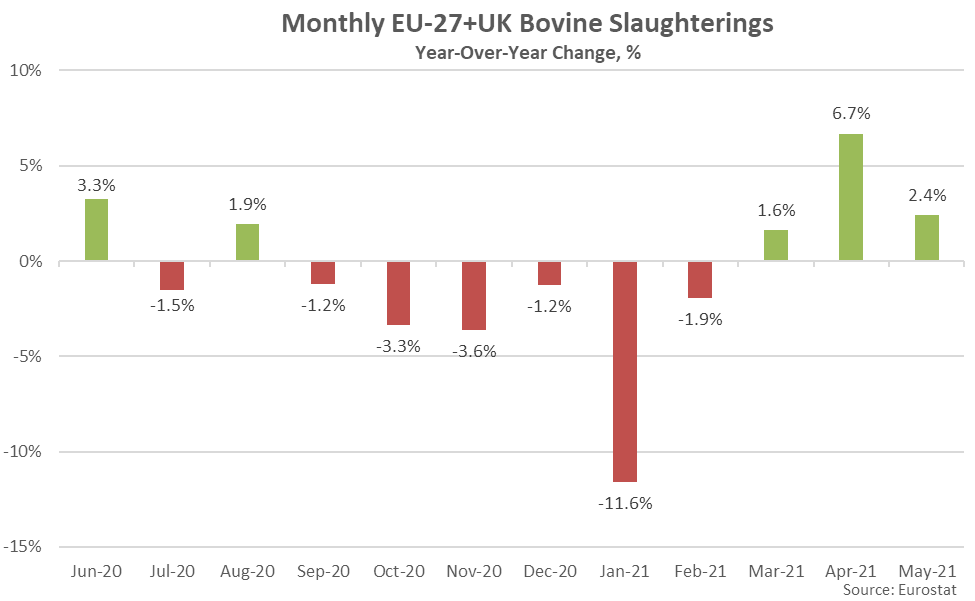European Milk Production Update – Aug ’21
European Milk Production Update – Aug ’21
Executive Summary
EU-27+UK milk production figures provided by Eurostat and the Agriculture and Horticulture Development Board of the United Kingdom were recently updated with values spanning through Jun ’21. Highlights from the updated report include:
- EU-27+UK milk production volumes increased 0.8% on a YOY basis throughout Jun ’21, remaining at a record high seasonal level for the 11th time in the past 13 months.
- Jun ’21 YOY increases in milk production were led by Italy, followed by Ireland, while production volumes declined most significantly from the previous year throughout Germany. Overall, 19 of the 28 countries experienced YOY increases in milk production throughout the month.
- EU-27+UK beef & dairy cow slaughter rates finished higher on a YOY basis for the third consecutive month during May ’21 when normalizing for slaughter days, increasing by 2.4% but remaining at the second lowest seasonal level experienced throughout the past six years.
Additional Report Details
According to Eurostat and the Agriculture and Horticulture Development Board of the United Kingdom, Jun ’21 EU-27+UK milk production volumes declined seasonally from the record high monthly level experienced throughout the previous month but remained 0.8% above previous year levels. EU-27+UK milk production volumes finished at a record high seasonal level for the 11th time in the past 13 months throughout Jun ’21.
Figures for Spain, Austria, Sweden and Luxembourg are not yet available and are based on the previous month YOY change in production. Spain, Austria, Sweden and Luxembourg have combined to account for just 8.6% of total EU-27+UK production volumes throughout the past 12 months.
’20-’21 annual EU-27+UK milk production volumes finished 0.6% higher on a YOY basis, reaching a record high level for the fourth consecutive year. ’21-’22 YTD EU-27+UK milk production volumes have increased by an additional 1.3% throughout the first quarter of the production season.
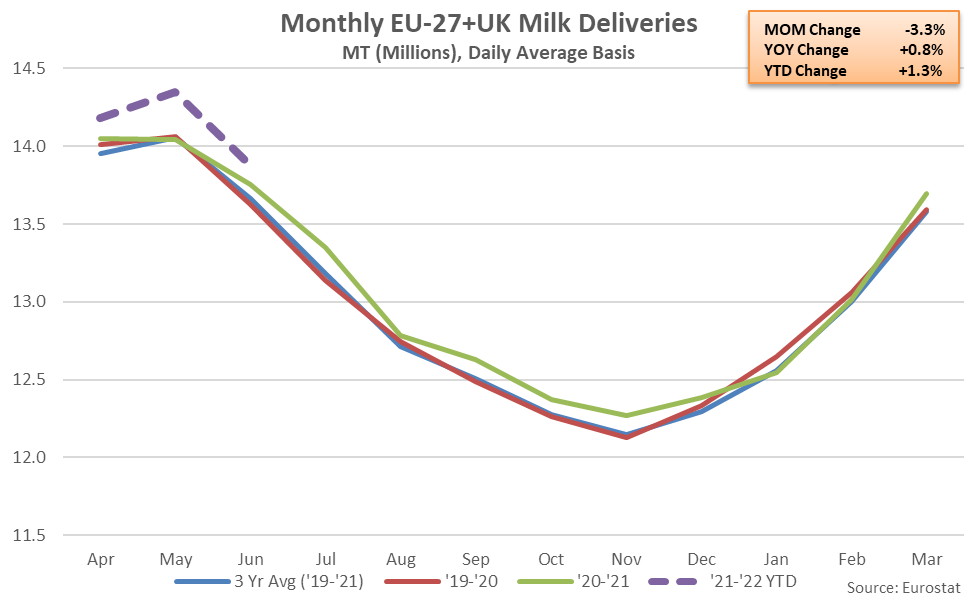
The Jun ’21 YOY increase in EU-27+UK milk production volumes was the fourth experienced in a row, although the YOY growth rate declined from the three year high level experienced throughout the previous month. EU-27+UK milk production volumes have finished higher on a YOY basis over 26 of the past 29 months through Jun ’21.
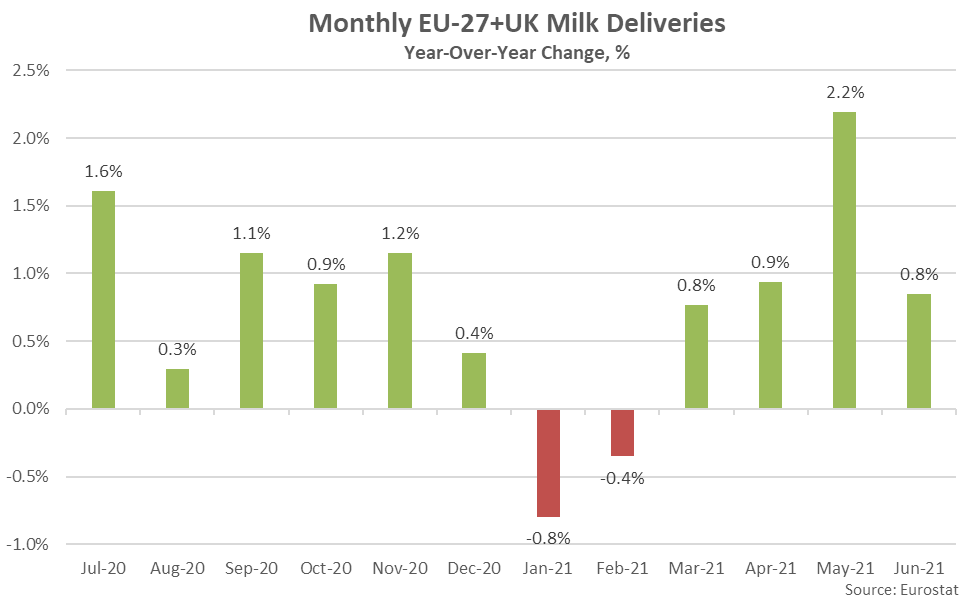
Jun ’21 YOY increases in production on an absolute basis were led by Italy, followed by Ireland, while YOY declines in production on an absolute basis were led by Germany.
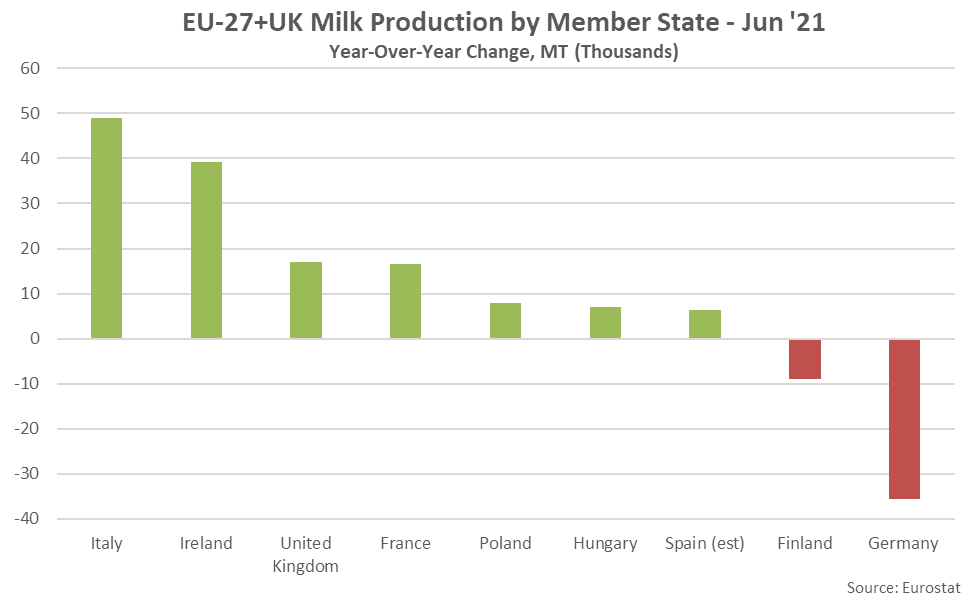
YOY increases in production on a percentage basis were led by Cyprus (+11.3%), followed by Hungary (+5.2%) and Greece (+5.1%), while declines in production on a percentage basis were led by Malta (-4.6%), followed by Finland (-4.5%) and the Czech Republic (-1.9%).
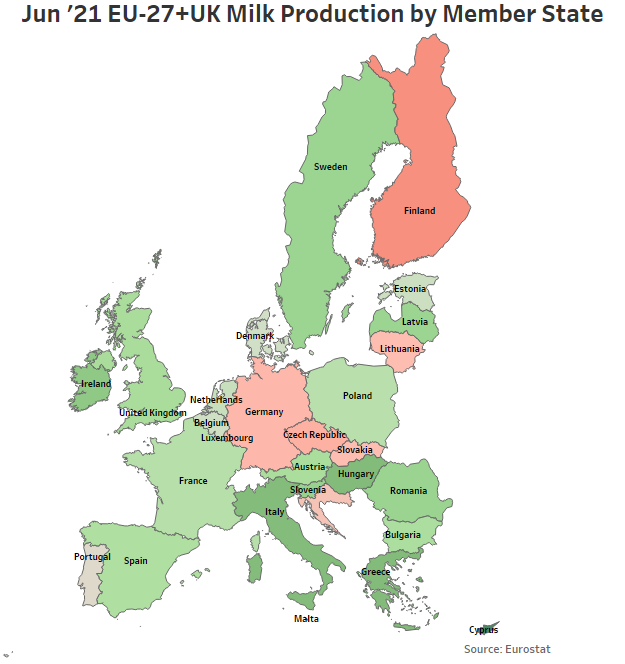
Nine of the top ten milk producing member states experienced YOY increases in milk production during Jun ’21, as production within the top ten milk producing member states increased by a weighted average of 0.9% throughout the month. The top ten EU-27+UK milk producing member states accounted for over 85% of the total EU-27+UK milk production experienced throughout the month. Production outside of the top ten milk producing member states increased by 0.6% on a YOY basis. Overall, 19 of the 28 countries experienced YOY increases in production volumes during Jun ’21.
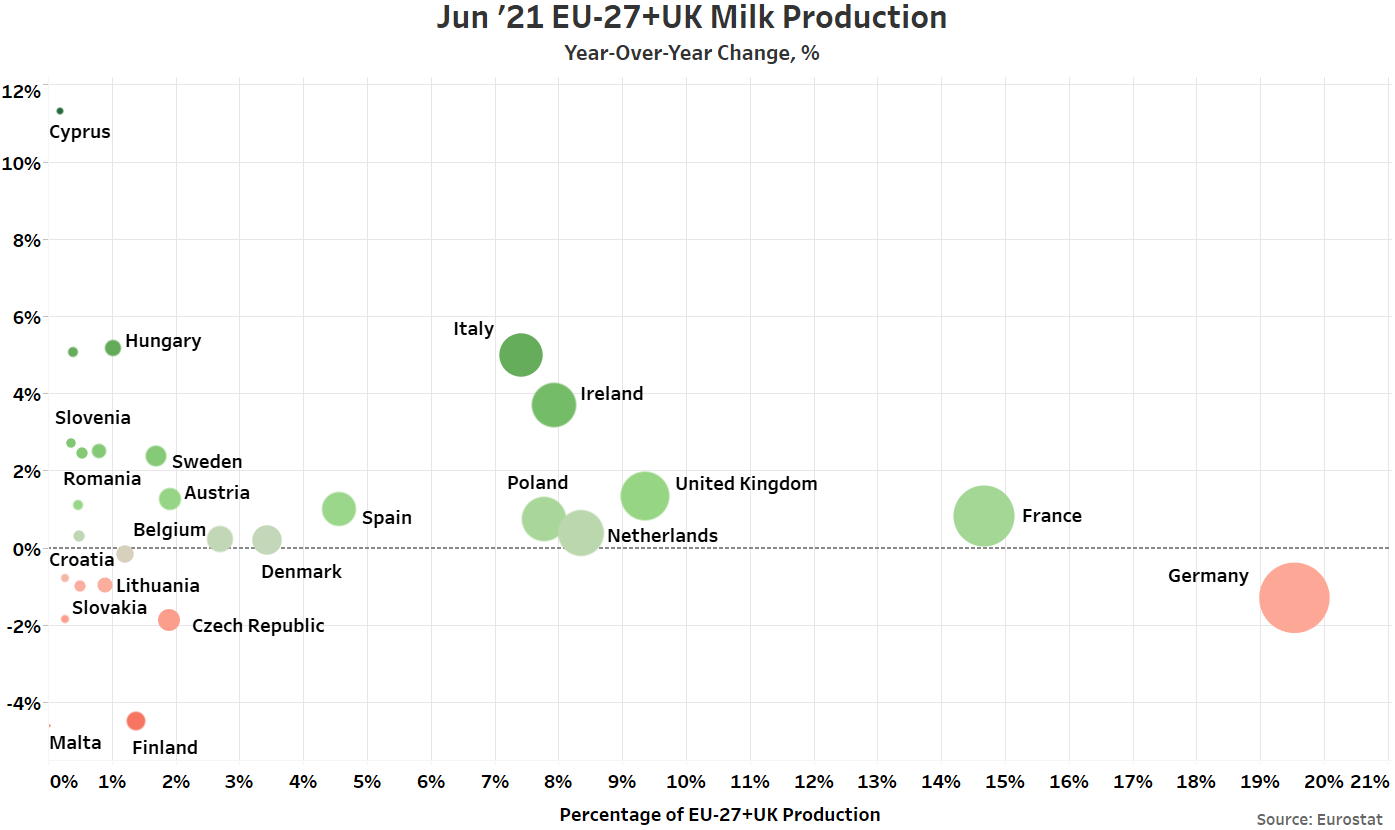
EU-27+UK beef & dairy cow slaughter finished higher on a YOY basis for the third consecutive month during May ’21 when normalizing for slaughter days, increasing by 2.4% but remaining at the second lowest seasonal level experienced throughout the past six years. YOY increases in beef & dairy cow slaughter were most significant throughout Spain, followed by Germany and the United Kingdom.
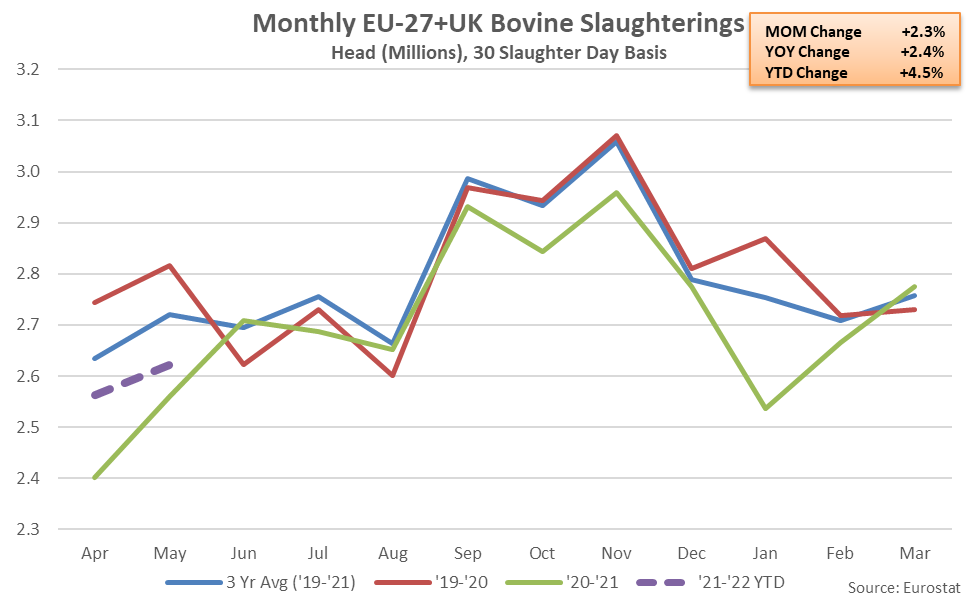
’20-’21 annual EU-27+UK bovine slaughter declined on a YOY basis for the second consecutive year, finishing down 3.3% and reaching a seven year low level. The USDA is projecting a 1.0% YOY decline in the EU-27+UK dairy cow herd throughout the 2021 calendar, following the general trend towards an overall smaller herd size and more productive animals.
